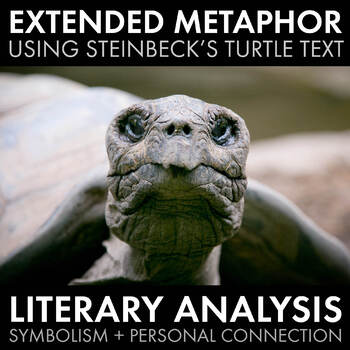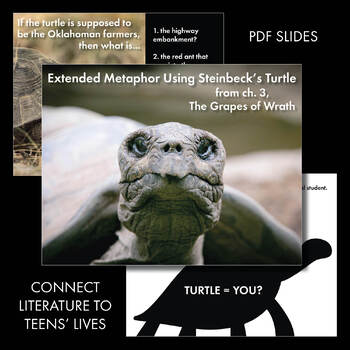Extended Metaphor, Symbolism, Literary Analysis, John Steinbeck Text, CCSS
- Zip
What educators are saying
Description
Analyzing literature doesn’t have to be boring. Instead, show your class the awesomeness that great writers tuck into their works and help them use symbolism to make connections between the text and their own lives.
In this visually vibrant presentation, you’ll use a small slice of John Steinbeck’s classic novel The Grapes of Wrath (link included) to take students through an easy-to-follow 45-minute lesson where they analyze a stand-alone piece of text. You do not need to study any Steinbeck in your class for this lesson to work, though these materials are a great supplement to a literature study of any of John Steinbeck's works.
Package includes:
3 slides to guide students through the lesson
2 pages of lesson steps and detailed answer key/discussion starters
(All materials are in uneditable PDF format.)
Please note that this lesson is included in my money-saving FOUR WEEK UNIT covering Steinbeck's Of Mice and Men. No need to purchase this lesson separately if you've already own the Of Mice and Men bundle.
Thanks for stopping by!
Cover image credit: Pixabay, Public domain




